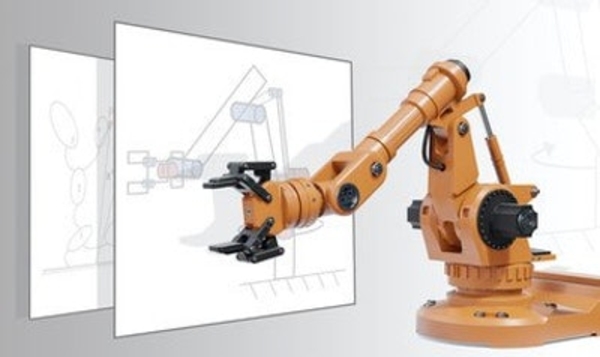Price:
7 EUR
Contact
Université catholique de Louvain
Description
This course aims at acquainting you with the modeling and simulation of complex articulated mechanical systems, denoted as multibody systems, such as vehicles, merry-go-rounds, bicycles, cranes, human bodies, suspensions, robot manipulators, mechanical transmissions, etc.
This course is based on (1) video clips focusing on the main theoretical background and concepts, (2) well-illustrated written sections giving more details about the mathematical formulation, and (3) questions, exercises and modeling projects.
Despite the intrinsic complexity of such systems in terms of morphology and motions, basic skills in Newtonian mechanics, linear algebra and numerical methods are sufficient to model them, provided that the endless and tedious computation related to their internal kinematics and dynamics are at our disposal. This is the purpose of the symbolic program ROBOTRAN, which can be used with this course and can automatically generate the full set of equations of motion of MBS, in a symbolic manner, i.e. exactly as if you were writing them by hand, whatever the size and their morphological complexity of the application. Hence, this course will instead teach you how to intervene upstream and downstream of this generation step.
Upstream the latter you will learn how to translate the real system, e.g. a car suspension, into a virtual multibody model comprising bodies, joints, springs, sensors, constraints, external forces and torques… with a level of refinement that will be dictated by the original issue: for example, what is the minimum tire ground force when the car suspension is excited by a shaker?
Downstream the symbolic generation, your intervention will consist in:
Completing the symbolic model with features that are indispensable for/specific to your system, e.g. a tire force model, a data look-up-table interpolation or the tuning of a motion controller, among other things;
Selecting and implementing under the form of a program (in Python, Matlab, or C) the suitable numerical method to solve the differential equations of motion, given the original question: an equilibrium solution can give you the static forces and the system deflection, a time simulation can compute any transient motion of the system submitted to forces and torques, a modal analysis will provide you with the eigenmodes that inform you about the system stability and damping characteristics.
Selecting the most suitable results, including self-explanatory - and sometimes funny - video animations of your multibody system in motion.
In sum, this course, based on the use of the ROBOTRAN* symbolic generator, will allow you to focus on the most interesting aspects of the multibody modeling process, by entirely mastering your computer model from the input data to the results, instead of using a black-box multibody program that clearly goes against the educational objective of such a course.
Enjoy Multibody Dynamics!
Note: The course was built to teach modeling and simulation of multibody systems, and not to teach any specific software. Some results of system modeling and simulation are provided with Robotran software. Thus, the use of the multibody software of your choice is possible but will not be subject to the monitoring of the teachers of this course.
This course is provided in collaboration with Polytechnique Montréal.
Specific details
Category of Education
Technology and Engineering
